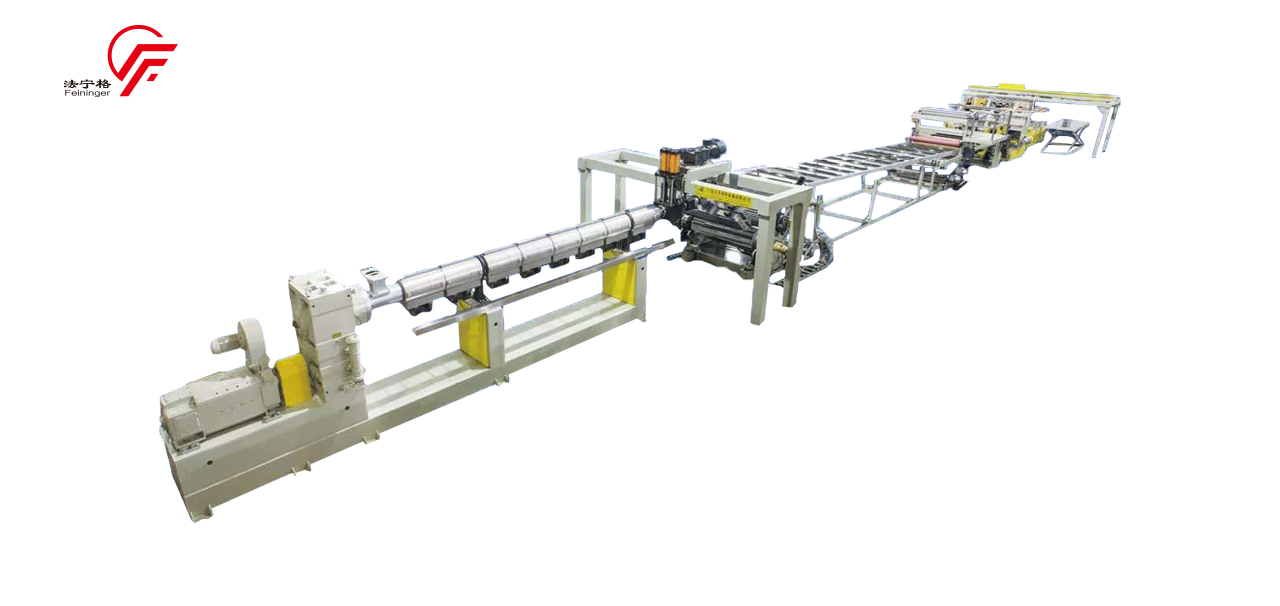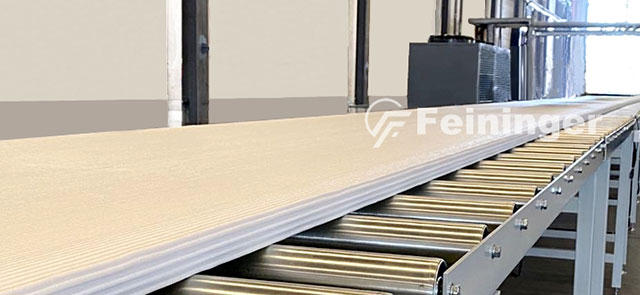What's this? It is a beverage bottle, also called a PET bottle. Actually, In our daily life, beverage bottles are everywhere. Every second more than 16,000 plastic bottles are sold worldwide. Less than 50% of these PET bottles are recycled, and only 7% go to make new PET bottles. Most plastic bottles end up in a landfill or our environment, where plastic takes hundreds of years to decompose, so the plastic has caused great damage to the environment
Feininger, a plastic machines manufacturer, we have a clear responsibility to play its part in accelerating the transition to a circular economy.
Do you know the selling price for the XPET foam core? If you are familiar with this foam core, you may know that it is used in various industries. The price range is from 500 to 800 USD per m3. Sometimes the price even will be 1,000 USD due to the different specifications of PET foam.

Using our PET production line, we can help you recycle disposable PET bottles and process them into high-value foam core materials. It is mainly used for composite sandwich structures utilized in up to 90-meter long wind turbine blades, high-speed train body structures, surfboards, and construction insulation projects.
Let me introduce you to our PET foam production line with our advanced foaming technology. We have several models, today I’d like to show you the most popular one FS 95T/250C.
This PET production line's production capacity reaches 500-600 kg/hr, and it can produce 85-135 m3 PET foam board every 24 hours. You may ask why the machine capacity is a little small? PET foam not like XPS foam, the density of PET foam is from 80kg to 150kg/m3, while XPS foam is from 28-45kg/m3, so PET foam is three times heavier than XPS foam produced by the XPS production line.
The raw material for PET foam production is polyethylene terephthalate (PET), talcum powder, and tackifier. For polyethylene terephthalate, you can choose recycled PET material instead of virgin one to reduce the production cost. Our foaming technology can support recycled material.
For the complete production line, the very first part is the raw material drying system. Why need a drying system? Because the water content of PET raw materials is relatively large, we need to use a dry fluidized bed to remove water to make the water content less than 50ppm. Without this process, you may get PET foam with uneven cell structure, which means that the product is not qualified. And except PET raw material, other additives also needs to be dried before feeding to the extruder.
Let’s move to the next part, raw material loading and feeding system, this is a fully automatic system, and all feeders are loss-in-weight, which means you can directly set the feeding value in HMI according to your production formulation. All the raw material, including PET and additives, will be transported to the top of the platform by vacuum loading, then through the feeders, they are fed to the primary extruder. Usually, we will supply five feeders for this system, two larger feeders are for polyethylene terephthalate (virgin and recycled), the other three smaller feeders are for additives. Totally five different raw materials can be dosed at the same time.
Now we come to the tandem extrusion system. Ok, the primary extruder is a 95 mm diameter twin screw extruder, and the secondary extruder is a 250 mm diameter single screw extruder. The purpose of the primary extruder is to mix and melt the raw materials. The purpose of the secondary extruder is for cooling. The temperature at the primary extruder is about 280 degrees, and at the end of the secondary extruder, the temperature is about 240 degrees, so it needs a cooling system. Usually, for secondary extruder cooling, there are two cooling ways, one is water cooling, the other one is oil cooling. Oil cooling can control the temperature very average, by using the temperature controller unit, you can directly set the temperature to cool the secondary extruder. Anyway, you still need cooling water to cool the oil in the temperature controller unit by the heat exchanger. So whether you choose water cooling or oil cooling, you still need to buy the chiller for this system.

Let’s continue to the next part, the static mixer. This part is after the secondary extruder, it is to mix the temperature in the radial direction. The static mixer will mix the raw material again. The next part is the slot die, which is also an important part of the production line. For PET foam, there are two common widths, one is 610 mm, the other one is 1005 mm. The width of the foaming product is depended on different slot die. The PET foam comes out of the slot mold and passes through the calibrator and pulling device to the downstream machine.
Let’s move to the primary extruder again. Here just now I forgot to share with you the information about blowing agents system. For PET foam production, we use CO2 plus cyclopentane as foaming gases. CO2 is green foaming gas, it is widely used in extrusion foaming technology, and it is also difficult to control and make a stable injection to the extruder. But for our company, CO2 foaming technology is already a very mature one. Over the past decade, our global research and development team developed a process technology enabling the production of PET foam products with only CO2 foaming.
All our downstream machines are designed for an 1100 mm wide board. At the top and bottom of cooling rollers, there are installed cooling fans. If you can touch the PET foam surface, you may say, wow, it is hot. Actually, in the core of foam, the temperature is much higher. As I mentioned before, at the end of the secondary extruder, the temperature is 240 degrees. So it needs sufficient cooling again on a cooling roller with cooling fans. The cooling roller length is about 48 meters. After the cooling roller, there is an edge milling machine, since it is a foam product, you will see the edge is round, after the edge milling machine, you will see the edge be flat.
After the edge milling machine, there is a cross-cutting machine, you can see the cut tool is a saw, not the blade. After the cross-cutting machine, it is a revolving cooling unit, its purpose is also cooling. Sometimes, we also call it cooling elevators. By going through this elevator, one PET foam takes about 4 hours. If conveyed foam horizontally for 4 hours, it is equivalent to 200 meters driving roller. But usually, it’s difficult to buy or rent a workshop with 300-400meters. So for PET foam production, the revolving cooling unit is inevitable to save up space. After the revolving cooling unit, there is an automatic stacker. It can palletize foam boards one by one automatically.
We have already introduced the relevant accessories of the PET production line. If you have any questions, you can contact our technical staff online. In addition to PET production lines, Feininger also produces ETPU production lines, EPS production lines, and recycling and pelletizing machine, which can meet any of your needs.

 Español
Español Pусский
Pусский
